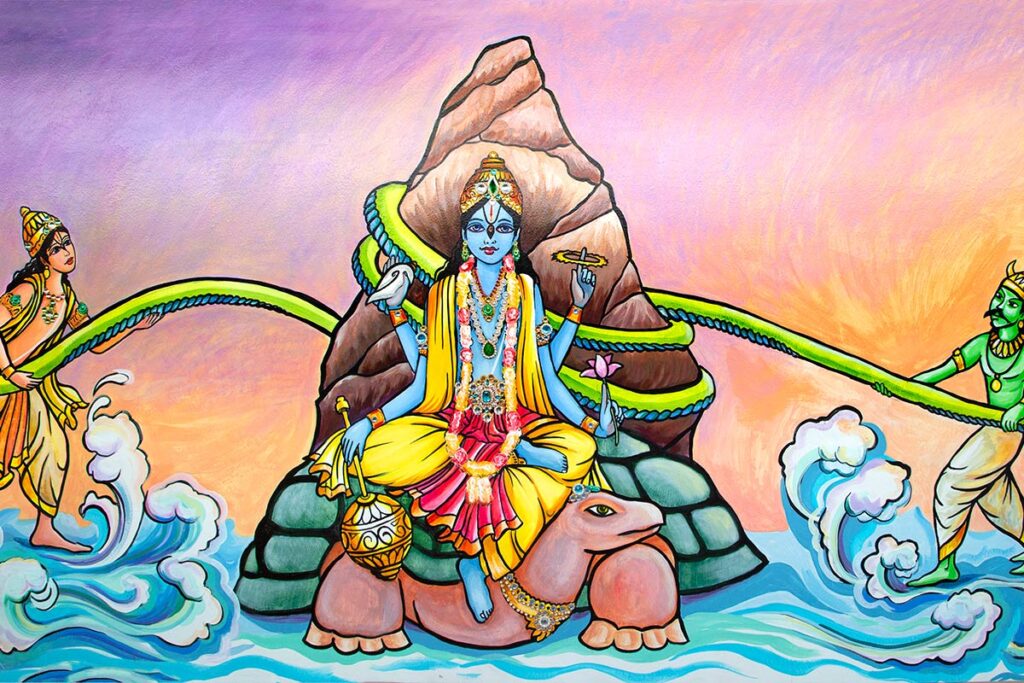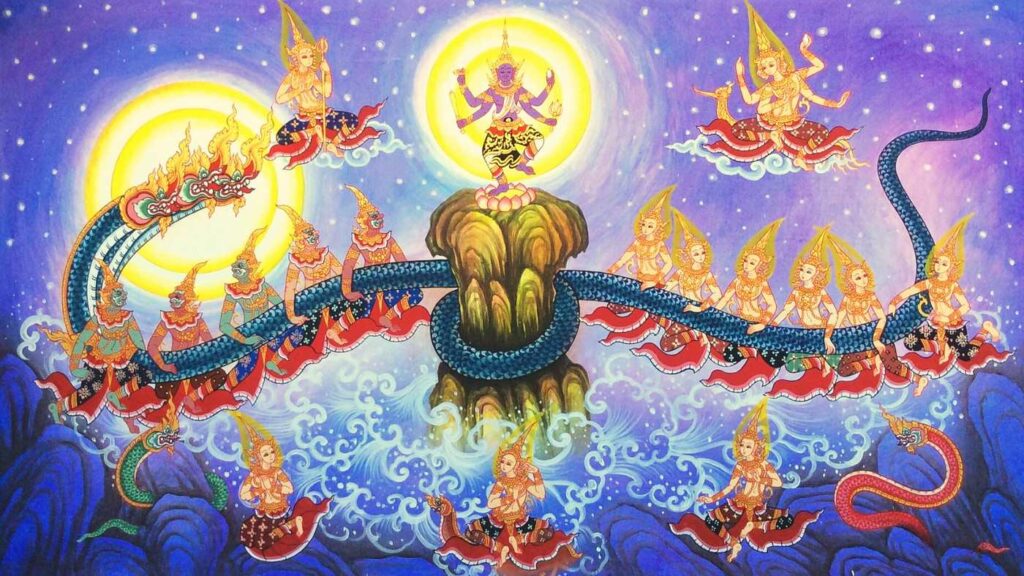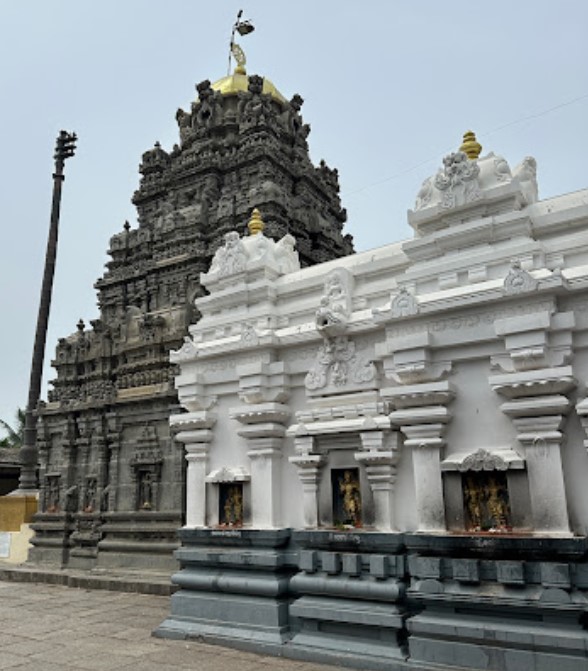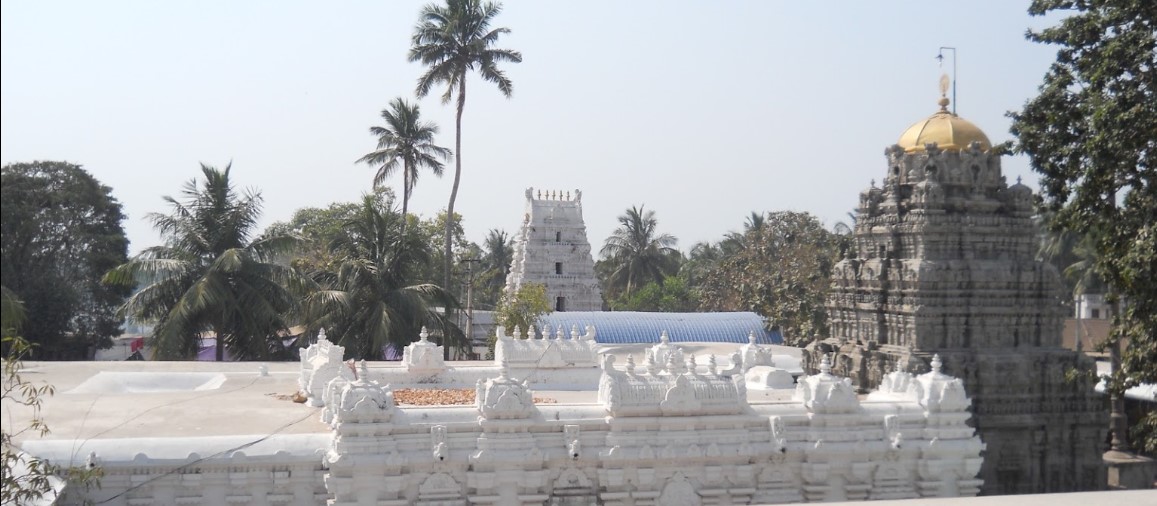Sri Kurmanatha Swamy Temple – Lord Vishnu in Kurma Incarnation
The second incarnation of Lord Vishnu was Kurma avatar. The Lord had taken this incarnation to help the Gods and demons churn the milk ocean to get Amrutam (the elixir of immortality).
The demons were dominating the devatas on the battlefield because their Guru Sukracharya obtained the Sanjeevini (mantra for making the dead alive). All dead demons were multiplying even after they were killed by devatas in war.

When gods prayed to Lord Vishnu, he advised them to churn the ocean with the help of Mandara Hill as the churning rod and snake God Vasuki coiled around it as a rope to pull either side by devatas and demons. While churning the ocean, the Mandara Hill was sinking into the ocean making it difficult for them to churn. Then Lord Vishnu took the form of Kurma (turtle). He supported the hill on his back and saved the hill from sinking.

It is believed that praying to Lord Vishnu in the form of Kurma brings wealth, health prosperity in life, and sturdiness. Kurma Jayanti is celebrated on Purnima day in the month of Vaisakha month. Many also believe that starting the construction of houses on this auspicious day brings happiness to the family.
Sri Kurmanatha Swamy Temple Location
One of the famous temples dedicated to this incarnation is situated in the Srikakulam district in Andhra Pradesh. One can easily reach this place which is 15 km away from Srikakulam. The temple is popularly known as ‘Sri Kurmanatha Swamy temple’.
Click here for Google Map’s Location
Legend of the Temple
Swetha Chakravarthi desired to make love to his wife, Vishnu Priya when she was observing austerities on Ekadashi day. To stop the advances of her husband, she prayed to Lord Vishnu who sent a stream of rushing water to separate her husband. He was carried away to Swetha Giri by the gush of the water stream. Narada appeared before the king and advised him to do penance by reciting the Kurma Narayana Mantra.
Pleased by the prayers, Lord Vishnu appeared before him and agreed to stay back there to bless the devotees. Lord Brahma consecrated the deity in the form of Kurma (turtle) and installed with holy Gopala Yantra. Lord Vishnu also created a pond called Swetha Pushkarini with his Sudarsan Chakra to enable his devotees to take a bath and worship him in the temple. Vishnu’s consort evolved from the pond and stayed with the Lord with the name Kurma Nayaki mounted on Garuda.
More about Temple.
The temple was renovated several times. The present structure of the temple was built in the 13th century by Ananthavarman who was a Ganga King. Before Sri Ramanuja visited this temple, the holy rituals of God were being done according to Shaivite culture. With the help of King Ganga, the rituals have since been performed in Vaishnava tradition.
However, this is one temple that follows both traditions. Every day abhishekam is being done. Akhanda Deeparadhana, Special Nitya Kalyanam, and Nitya Bhogam are done. The annual celestial marriage of the Lord is done on Vaiskha Suddha Ekadasi. The idol is made of a large saligrama stone. It is 2.5 feet long.
The idol is in three parts,
- the head facing the west,
- the middle stone representing the body of the turtle, and
- the small stone at the end represents the Sudarshan chakra.
The superstructure of the temple is in the shape of an Octagonal sikhara with a kalasa on the top. The main hall has 108 monolithic stone pillars each one in a different style and architecture. The postal authorities released a five-rupee postal stamp depicting the temple in the year 2013.

This is the only temple that has two dwajastambas (flag posts) facing the East and West. The Lord originally was east-faced but turned west at the request of his devotee and hence a flag post in the west direction was also established. There was a story for this. Once a tribal king visited the place and being amused by the pushkarani he constructed a tank and was worshipping the Lord.
He was staying in the ashram of Sage Sampangi which was situated on the western side of the temple. At his request, the Lord turned towards the west, and hence a flag post was consecrated in the temple. The temple is guarded by Lord Anjaneya instead of Lord Bhairava because a curse was bestowed on him. When Balarama wanted to visit Lord Vishnu, Bhairava, the kshetrapala of the temple, did not allow him to enter.
Angered by this, Balarama replaced him with Hanuma as the protector of the place. A flag post is also constructed on the east side as the Lord was originally facing east. Devotees are allowed to enter the temple both from the west side as well as the east side.
Before entering the temple, devotees have to visit the Pathalasiddheswara temple. The temple has 108 pillars and the architecture on one pillar is different from the other. It is believed that Lord Krishna played with Gopikas in the Pushkarini, hence the sand in the Pushkarini turned white.
A Place for Salvation
Sri Kurmam temple is considered a moksha sthanam (place of salvation) and Pushkarini has cosmic powers. Some people believe that this is as pious as Varanasi and hence people are obligated here to perform the rites of the departed souls. A bath in the Pushkarini is said to cleanse not only the soul but also all the ills of the body.
There are two more temples dedicated to the Kurma avatar,
- one is Sri Gavi Ranganatha Swamy temple in Chitradurga, Karnataka and
- the other one is Sri Kurma Varadharaja Swamy Temple in Chittoor.

